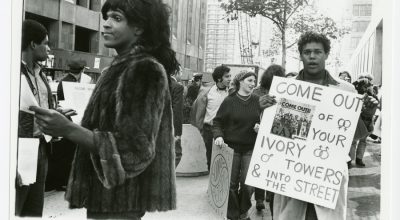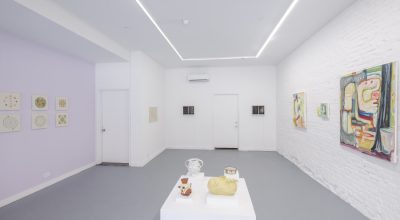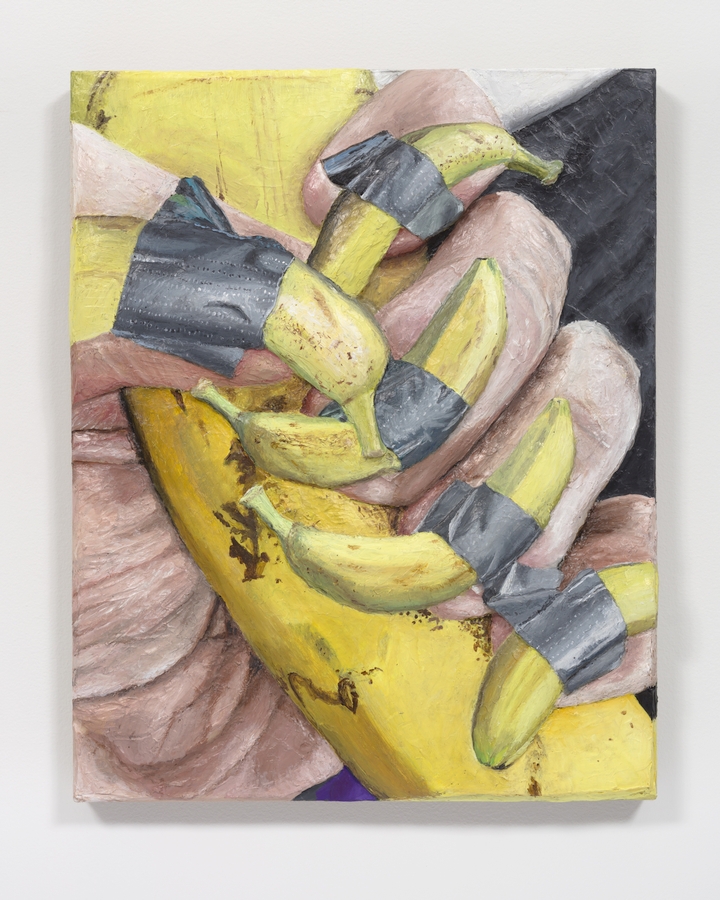
GINA BEAVERS: WORLD WAR ME
Gina Beavers (b.1974; Athens, Greece) creates sculptural paintings that explore the digital landscapes of our everyday lives. Drawing on images taken from Instagram, YouTube, image databases, and other online sources, she creates thick, tactile paintings that capture, in deeply visceral ways, the curated and often superficial nature of our digital lives. Her recent series of sculptural paintings are based on body painting, social media snapshots of food, make-up tutorials, memes, and bodybuilder selfies.
By examining the ubiquity and uniformity of certain types of images—from our selfie culture to our obsession with “food porn”—Beavers also highlights the ongoing flattening of identity and individuality through an unspoken but seemingly mutual agreement on what constitutes beauty, happiness, and a life well lived. Within her process, Beavers’ conceptual and formal interests converge, as she looks to push the possibilities of paint to its sculptural height while also subverting the flatness of the digital image back into three dimensions. Beavers’ ongoing play with notions of reality and physicality provides a dynamic platform through which to consider wider cultural and social dialogues.

For her inaugural solo exhibition with Marianne Boesky Gallery, the artist presents a selection of both large-scale and intimate sculptural paintings, including new works that illuminate the ways in which social media has distorted and fractured our sense of self. The exhibition’s title, World War Me -inspired by an online meme satirizing the probing voiceover of Carrie from the series Sex and the City-encapsulates Beavers’ fascination with the juxtaposition of massive global events next to myopic self-obsession, particularly seen with social media.
Beavers spends hours scouring Instagram, YouTube, blogs, and other online sources in search of images that inspire, compel, repulse, and amuse her. In recent years, she has become particularly drawn to make-up tutorials created by both professional and amateur artists. Beavers takes stills from these tutorials and recreates them with incredible realism, enlivening the flattened image with dynamic physicality. To create her intensely tactile works, Beavers builds up acrylic paint so densely on the canvas that she is able to sculpt it with a knife. For larger works, she also uses foam to add to the fullness of the forms.
«I am intrigued by the tools of creativity that are proliferating online, particularly when people apply these to their own bodies, from elaborate face and body painting to nail art,» said Beavers. «For the new works in World War Me, I began to use these tools on my own body, borrowing techniques from the internet to make certain artists and their work a part of my own physical self. I am interested in the ways existing online is performative, and the tremendous lengths people go to in constructing their online selves. Meme-makers, face-painters, people who make their hair into sculptures, are really a frontier of a new creative world.»
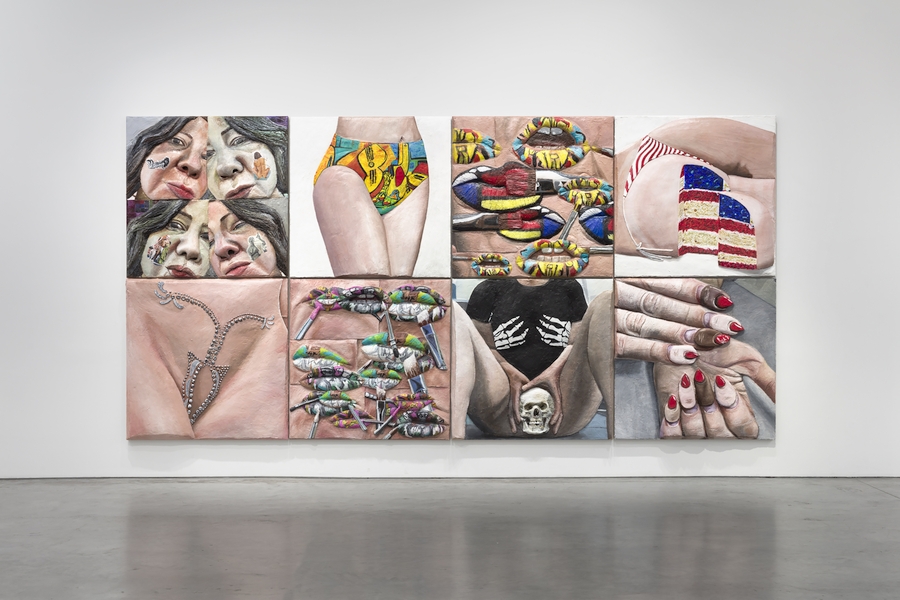
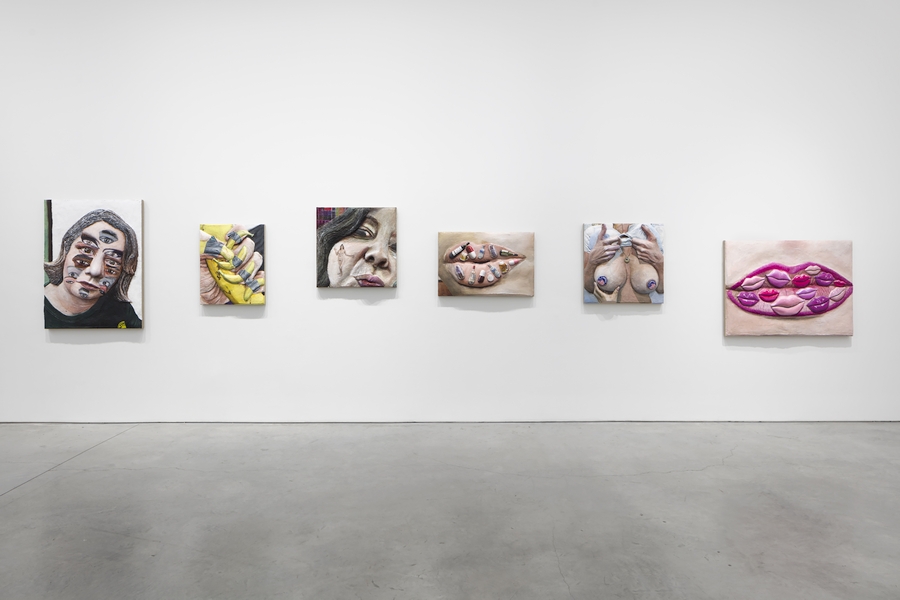

World War Me also features new large-scale paintings. As the use and application techniques of make-up has grown into a highly aesthetic medium -with make-up artists using the face as a canvas to produce extreme effects- so too has the complexity of Beavers’ work relating to this phenomenon. To create her newest body of works, Beavers painted her lips and cheeks with motifs from works by famous artists such as Franz Kline, Lee Bontecou, and Laura Owens, which she then photographed and used as source material. For Beavers, these artworks establish an intimate and physical connection to the history of art and question ideas of authorship and influence in the digital age.
In other recent works, Beavers explores how social media profiles and posts become endlessly self-referencing portraits, enabling the creation of multiple selves. For example, in one piece Beavers paints herself nude on her own face, and in another, the eyes of celebrities, illustrating how multiple personas and versions of oneself are generated online. Further, the images of her painted face are replicated in her sculptural paintings, creating illusionistic works that both compel and disorient the eye in ways that simulate the digital experience in physical space.
This fascination with identity and social media also dovetails with Beavers’ interest in Jia Tolentino’s essay «The I in Internet» from her recent book Trick Mirror, which examines how individual self-consciousness -especially in women- translates seamlessly into a desire for recognition and popularity online. To probe this idea further, Beavers gathered images of female bodies -whether nude photographs of famous artists or everyday women who have posted online- then used this source material as the basis to create altered versions of these images on herself and then on the canvas. These images are juxtaposed against works inspired by found memes and food porn, which blend ideas of consumption with sexual desire.
Taken together, the works in World War Me explore the intertwining trajectories of selfhood through the lens of social media, capturing the manner in which the internet has destabilized our sense of truth and reality, while simultaneously creating connection, gratification, and anxiety.

GINA BEAVERS: WORLD WAR ME
Marianne Boesky Gallery, 507 W 24 Street, New York, NY
September 15 – October 17, 2020
También te puede interesar
Art After Stonewall, 1969–1989
Coinciding with the 50th anniversary of the uprisings, "Art after Stonewall, 1969–1989" is a long-awaited and groundbreaking survey that features over 200 works of art and related visual materials exploring the impact of the...
Fernando Bryce:the Decade Review
In Bryce’s review of the decade what is implicit is that world diplomacy was a game played expertly, and exclusively, in the Northern Hemisphere, while the South was dealt and tampered with, most frequently...
ISA CARRILLO, CIRCE IRASEMA, LUCÍA VIDALES: TERRA PRETA
"Terra Preta" presents the work of three Mexican artists to consider the sacredness of fertile soil and the relevance of ancient wisdom. Through depictions of Mesoamerican mythology and deity representation, the examination of the...

